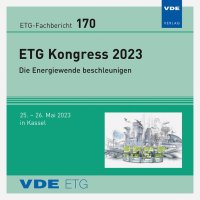pandaprosumer – Tool for Consideration of Flexibilities in Multi-Energy Distribution Grids
Conference: ETG Kongress 2023 - ETG-Fachtagung
05/25/2023 - 05/26/2023 at Kassel, Germany
Proceedings: ETG-Fb. 170: ETG Kongress 2023
Pages: 8Language: englishTyp: PDF
Authors:
Drauz-Mauel, Simon Ruben; Lauven, Lars-Peter; Braun, Martin (University of Kassel, Germany & Fraunhofer IEE, Kassel, Germany)
Abstract:
In this paper, a tool called pandaprosumer is introduced. pandaprosumer enables the integration of flexibilities in a mutlienergy grid environment. pandaprosumer is based on pandapower and pandapipes in architecture and structure. Originally, pandapower was focused mainly on power systems. pandapipes developed this idea further and offers a solution to simulate pipe systems, like district heating, gas, or water grids. Furthermore, pandapipes also enables the user to consider multi-energy grid planning operations coupling different energy sectors. pandaprosumer aims to take this concept a step further and integrates prosumers into the grid simulation. To represent prosumers in a multi-energy environment, the controller architecture used in both pandapower and pandapipes is used. Based on the idea of a superordinated structure, the multi-energy grid structure of pandapipes is extended further to become an inclusive and encompassing energy system environment. A pandaprosumer instance consists of three different elements – component, controller, and data class. The data class defines variables and their types as input for components and controllers. Data classes keep structure to clearly define the input of each component and controller. Components contain the constraints of any kind of prosumer, like storages, heat pumps or photovoltaics. Controllers, by contrast, contain any kind of logic inherent to a component. The logic can be as simple as an open loop control or as complex as a mathematically optimized or AI system. Moreover, superordinated controllers simulate the interaction among grids and components as well as between them. In this paper, an example is introduced, in which several heat pumps are coupled to a power grid. A superordinated controller, connecting power grid and several heat pumps, surveils the bus voltages, line and transformer loadings. As soon as the bus voltage, line or transformer loading limits are met, randomly 60 % of all heat pumps are set out of order, resembling the behavior caused by a radio frequency signal. It can be shown that even though only a few required interventions occur, the entire time series is affected due to the time-dependency caused by the involved heat storages. Furthermore, a grid relief is only gained by a massive loss of comfort.


